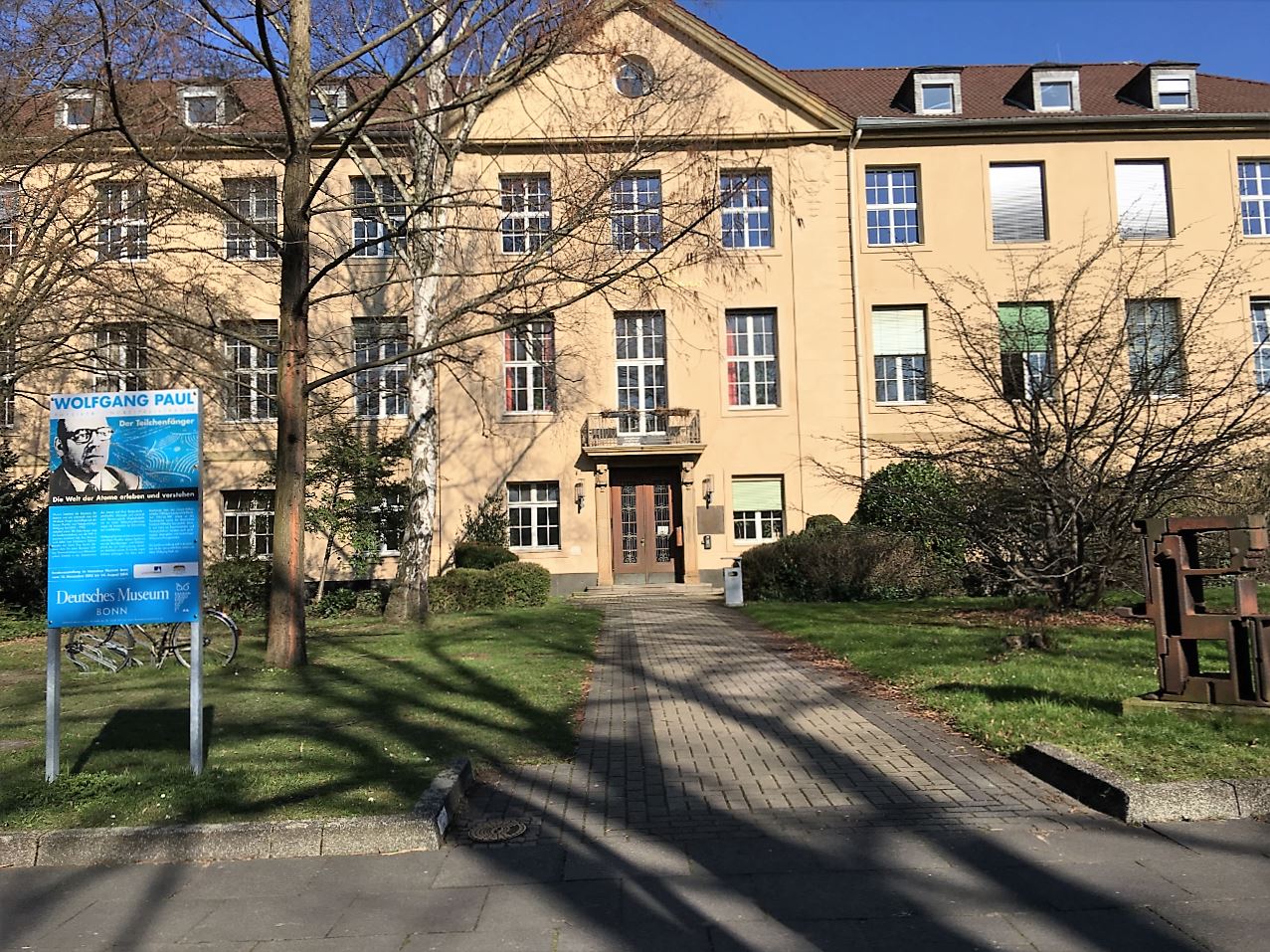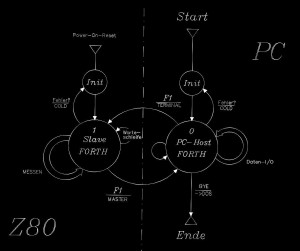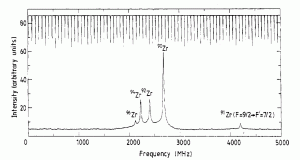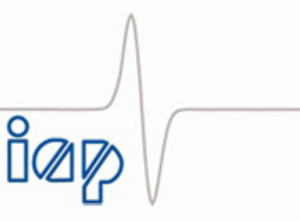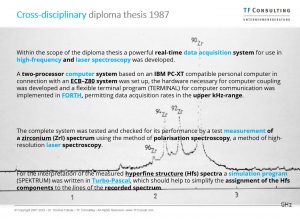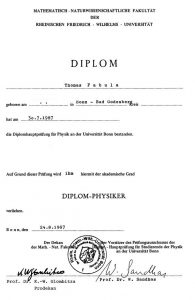Aufbau und Entwicklung eines
PC-Meßwerterfassungssystems für
die Hochfrequenz- und Laserspektroskopie
Diplomarbeit
Thomas Fabula, Bonn 1987
ausgeführt am Institut für Angewandte Physik

der Rheinischen Friedrich-Wilhelms-Universität Bonn
Zusammenfassung
Im Rahmen der Diplomarbeit wurde ein leistungsfähiges Echtzeit-Meßwerterfassungssystem (MES) für den Einsatz in der Hochfrequenz- und Laser-Spektroskopie entwickelt.
Es wurde ein Zwei-Prozessor-Rechnersystem auf der Basis eines IBM PC-XT kompatiblen Personal Computers in Verbindung mit einem ECB–Z80-System aufgebaut, die für die Rechnerkopplung notwendige Hardware entwickelt und ein flexibles Terminalprogramm (TERMINAL) für die Rechnerkommunikation in FORTH implementiert.
Das Gesamtsystem wurde mit einer Testmessung eines Zirkon (ZrI)-Spektrums mit der Methode der Polarisationsspektroskopie, ein Verfahren der hochauflösenden Laserspektroskopie, getestet und auf seine Leistungsfähigkeit hin überprüft.
Zur Interpretation der gemessenen Hyperfeinstruktur (Hfs) Spektren wurde ein Simulationsprogramm (SPEKTRUM) in Turbo-Pascal geschrieben, welches die Zuordnung der Hfs-Komponenten zu den Linien des aufgezeichneten Spektrums erleichtern helfen soll.
Universität Bonn
IAP – Institut für Angewandte Physik
Construction and development of a
PC data acquisition system for
high-frequency and laser spectroscopy
Diploma thesis by Thomas Fabula
Bonn 1987
performed at the Institute of Applied Physics of the Rheinische Friedrich-Wilhelms-University Bonn.
Summary
Within the scope of the diploma thesis a powerful real-time data acquisition system for use in high-frequency and laser spectroscopy was developed.
A two-processor computer system based on an IBM PC-XT compatible personal computer in connection with an ECB–Z80 system was set up, the hardware necessary for computer coupling was developed and a flexible terminal program (TERMINAL) for computer communication was implemented in FORTH.
The complete system was tested and checked for its performance by a test measurement of a zirconium (ZrI) spectrum using the method of polarisation spectroscopy, a method of high-resolution laser spectroscopy.
For the interpretation of the measured hyperfine structure (Hfs) spectra a simulation program (SPEKTRUM) was written in Turbo-Pascal, which should help to simplify the assignment of the Hfs components to the lines of the real-time recorded spectrum.
GitHub repositories
- github.com/ThomasFabula/Diploma_Physics
- github.com/ThomasFabula/HFS-SPEKTRUM
- github.com/ThomasFabula/Atomic-Physics
- github.com/ThomasFabula/ISOTOP
- github.com/ThomasFabula/HFSFIT
- github.com/ThomasFabula/ZIRKON
- github.com/ThomasFabula/Forth_Z80


